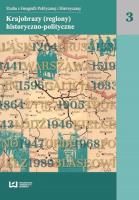The Jewish Autonomous Region in Siberia. Multicultural heritage and coexistence
The Jewish Autonomous Region in Siberia. Multicultural heritage and coexistence
Author(s): Alessandro VitaleSubject(s): Politics / Political Sciences, Geography, Regional studies
Published by: Wydawnictwo Uniwersytetu Łódzkiego
Keywords: interethnic relations; interethnic cooperation; Jewish Autonomous Region; JAR; Siberia; post - Soviet Russia; Birobidzhan; Khabarovsky Kraj
Summary/Abstract: Technically, Israel is not the only official Jewish homeland in the world. In the Far East of Russian Siberia there still exists the Jewish Autonomous Region (JAR) of Birobidzhan. Beginning in 1928 the Soviet Union set aside a territory larger than Belgium and Holland combined and considerably bigger than Israel, for Jewish settlement, located some five thousands miles east of Moscow along the Soviet-Chinese border, between the 48th and 49th parallels north latitude, where the climate and conditions are similar to Ontario and Michigan. Believing that Soviet Jewish people, like other national minorities, deserved a territorial homeland, the Soviet regime decided to settle a territorythat in 1934 would become the Jewish Autonomous Region. The idea was to create a new Zion–in a move to counterweight to Palestine – where a “proletarian Jewish culture” based on Yiddish language could be developed. In fact, the establishment of the JAR was the first instance of an officially acknowledged Jewish national territory since ancient times: the “First Israel”. But the history of the Region was tragic and the ex-periment failed. Nevertheless, Birobidzhan’s renewed existence of today and the revival of Jewish life in the post-Soviet JAR are not only a curious legacy of Soviet national policy, but after the break-up of the Soviet Union and the worldwide religious rebirth represent an interesting case-study in order to studysome challenging geographic pro-blems, and interethnic relations.
Journal: Studia z Geografii Politycznej i Historycznej
- Issue Year: 2014
- Issue No: 03
- Page Range: 151-170
- Page Count: 20
- Language: English

